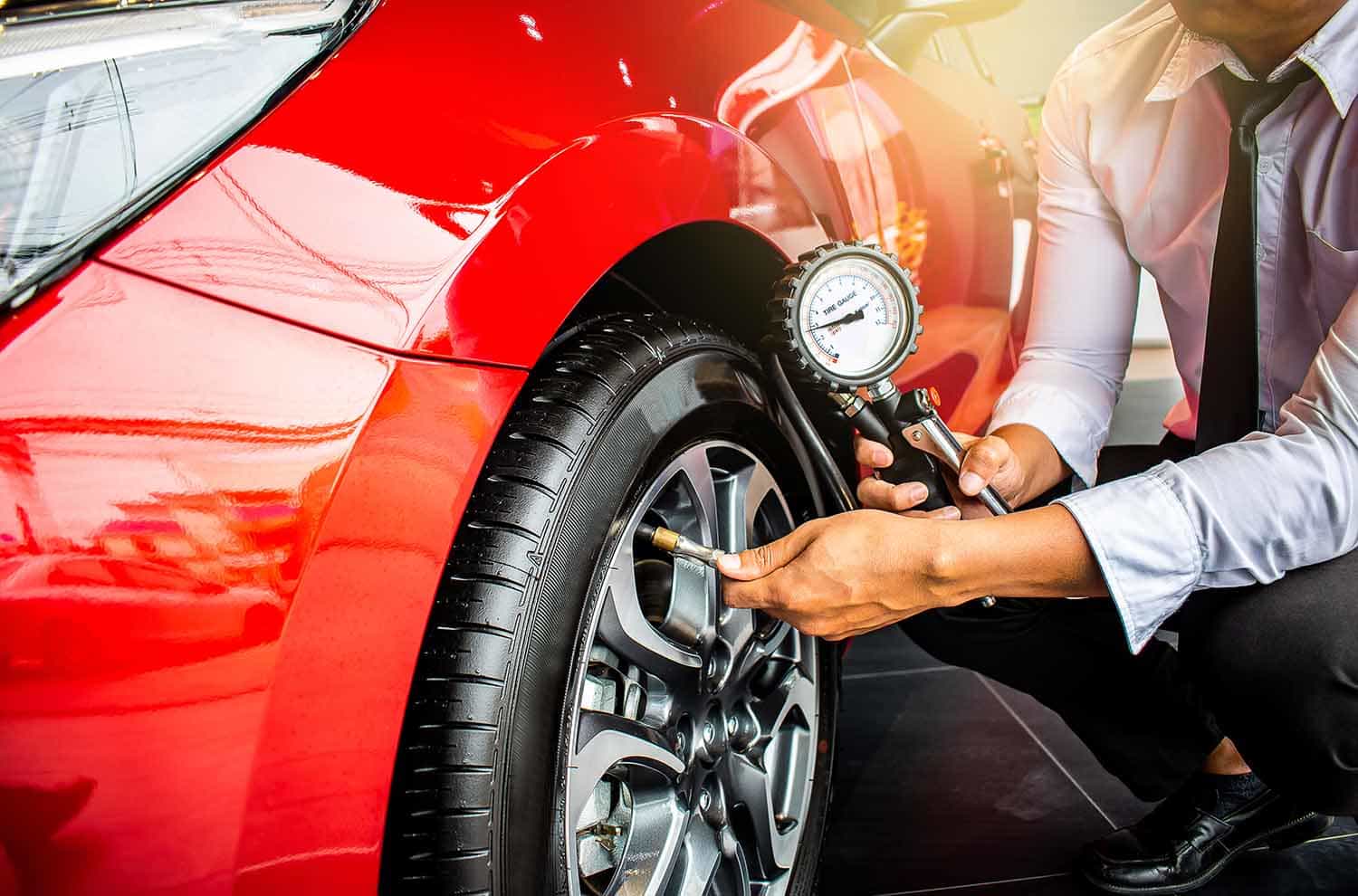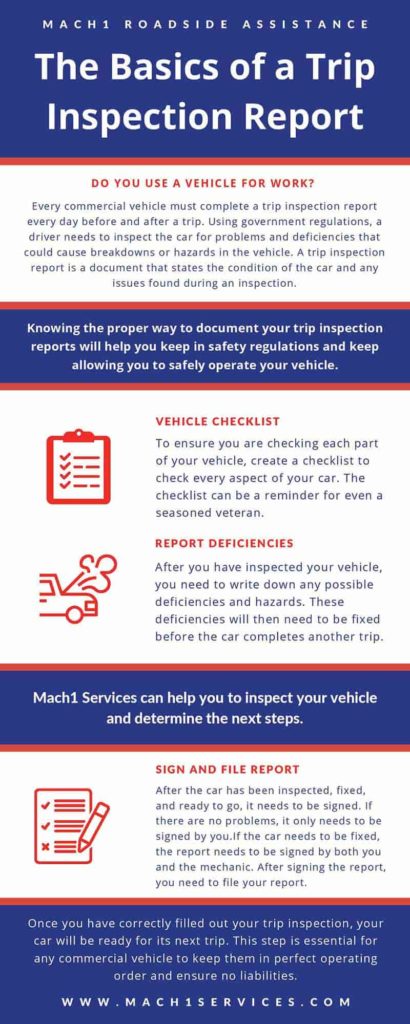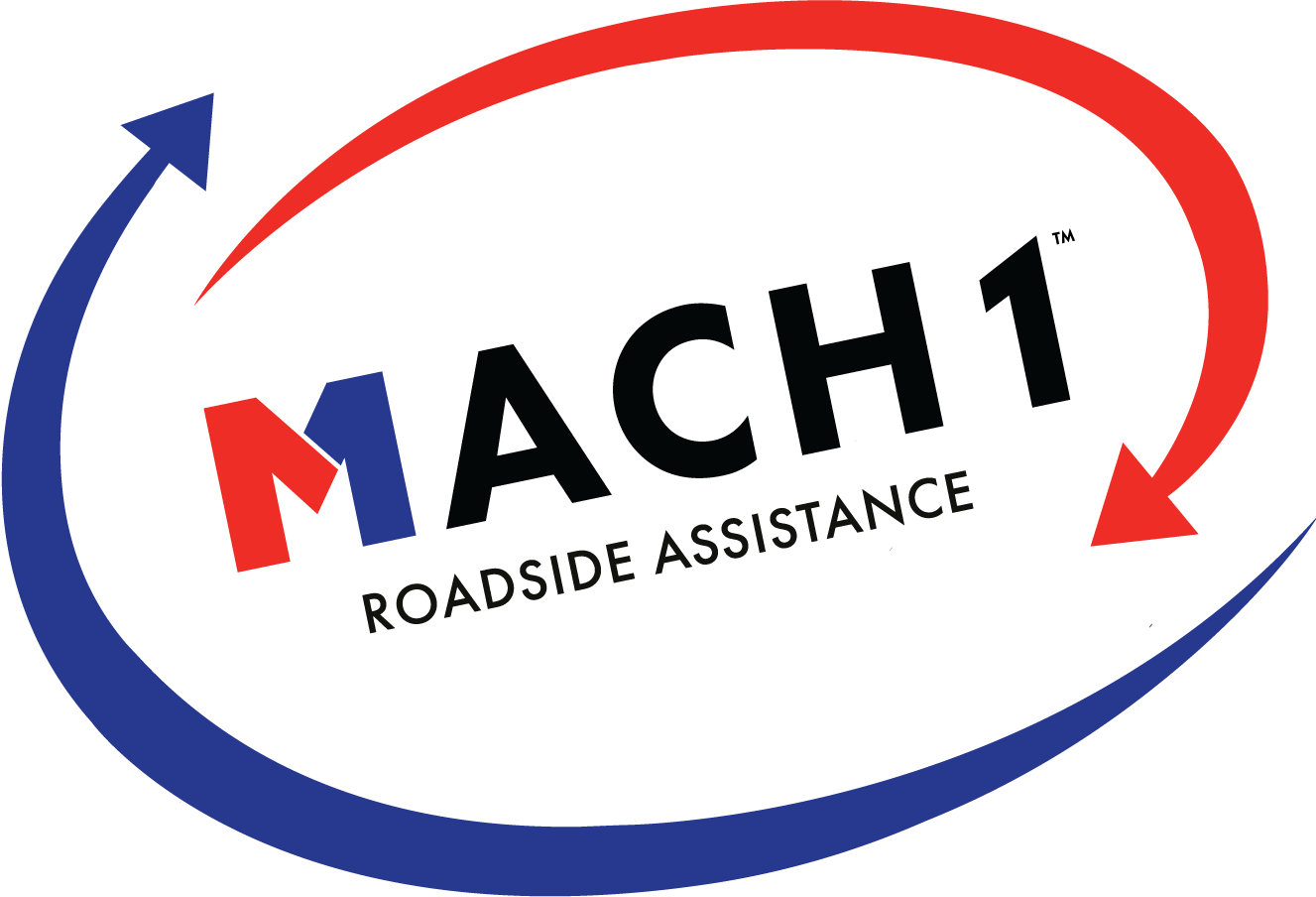
23 Feb The Basics of a Trip Inspection Report
You may be wondering what and why you may need to file a trip inspection report. Not everyone needs one, so it may not be necessary for you to even worry about one! You only need to worry if you have a vehicle you use for work. If you have a commercial vehicle, a trip inspection report will not worry about. It will help you to make sure your car is in working order and safe.
Every commercial vehicle must complete a trip inspection report every day before and after a trip. Using government regulations, a driver needs to inspect the car for problems and deficiencies that could cause breakdowns or hazards in the vehicle. A trip inspection report is a document that states the condition of the car and any issues found during an inspection.
Knowing the proper way to document your trip inspection reports will help you keep in safety regulations and keep allowing you to safely operate your vehicle. Read on to determine the basics needed for a trip inspection report.
Common Elements of a Trip Inspection Report for a Car
There are a couple of common elements that you need for an inspection report. By making sure you do each of the items below, you will have a complete and successful trip inspection report to file with the transportation department.
A commercial vehicle is the only car that needs to fill out a trip inspection report and file it with transportation. This report needs to be filled out every 24 hours or after a trip is completed, whatever is soonest.
A pre-inspection report can also be conducted, but it does not need to be filed with the department of transportation. It will help you to have a safe trip in your vehicle, but it is not necessary.
When filing a trip inspection, there is no set form to follow, but you need to make sure you have elements on your record.
 Vehicle Checklist
Vehicle Checklist
To ensure you are checking each part of your vehicle, create a checklist to check every aspect of your car. A vehicle inspection checklist lists every part of a vehicle. Use this as a guide to determine the deficiencies that would need to be fixed before your vehicle would be usable.
Each item on the following checklist needs to be checked for possible hazardous conditions:
- Brakes: Check your breaks to make sure they have brake pads and are not grinding against the gears. When brakes fail, you can struggle to slow your vehicle down and can cause accidents.
- Parking Brake: A parking brake is separate from the other brakes on your car. It can keep your vehicle from moving even when it is placed on a hill.
- Steering Wheel Mechanism: The steering wheel mechanism needs to be well oiled before every drive to avoid locking.
- Lights and Reflectors: Check to make sure your lights are working in your vehicle’s front and back. This will ensure you are not a hazard to other traffic.
- Tires: Check your tires for punctures or worn down treads. Both of these things can cause traffic hazards and cause accidents. This is especially important if it is raining or snowing for a car can slide or hydroplane, creating a possible accident.
- Horn: If your horn is unusable, it may be challenging to signify your location to oncoming traffic if you are in a problem spot.
- Windshield wipers: Getting caught in bad weather without usable windshield wipers can cause you to be unable to see and maybe even cause more hazards.
- Rear Vision Mirrors: These side mirrors help you to see in your blind spot and allow you to see what is happening behind you.
- Coupling Devices: This is extremely important if you are hooking up a trailer or other towing source to your vehicle. Make sure the device is in perfect order and will not fall apart during driving.
- Car rims and wheels: Check that the rims on your car are on correctly. Check the nuts and bolts for looseness to ensure that the rims and axles do not fall off. Also, check for rust and weakness in the metal.
- Emergency Equipment: Check on the emergency equipment in your vehicle to ensure it is in good working order.
The checklist can be a reminder for even a seasoned veteran. It ensures that your entire car is checked over and can help you determine if there are hazards that need to be fixed and your next step when filling out your report.
When filling out your trip inspection report, this initial crucial step ensures that you are keeping your car in perfect working order.
This inspection also needs to be conducted every year to ensure all car pieces work, including a battery, electrical, etc. This is a separate inspection but is just as crucial to keep a car in working order.
Report Deficiencies
After you have inspected your vehicle, you need to write down any possible deficiencies and hazards. These deficiencies will then need to be fixed before the car completes another trip.
These deficiencies can be as simple as fixing a light or as complicated as needing to order new parts for your vehicle. Without notifying and getting these problems fixed, your car cannot be legally used. The time required to submit the inspection report can be slightly different depending on the amount of time for repairs.
Take your car to a mechanic to get the deficiencies solved. The mechanic must fix each of the problems and sign off on the report.
The report shows that someone else has inspected the car and fixed the problems by signing off on the report. The vehicle is then usable for its next trip.
Sign and File Report
After the car has been inspected, fixed, and ready to go, it needs to be signed. If there are no problems, it only needs to be signed by you. This is because there is nothing that needs to be fixed.
If the car needs to be fixed, the report needs to be signed by both you and the mechanic. By signing the document, you are both attesting that the car is safe for operation.
After signing the report, you need to file your report. You can either do it electronically or hold on to your reports. When filing your reports, you also need to hold on to your certification reports for three months. This will make sure that if there is a problem, you have the paperwork to prove it.
How Often Should I Get a Trip Inspection for My Car?
A pre-trip inspection should happen every day for a commercial vehicle. Every time your car takes a trip, you need to inspect it. If the trip occurs over multiple days, it needs to happen every 24 hours. Each inspection should then be held on to for three months and filed appropriately.
The paperwork for a trip inspection needs to be produced for the department of transportation if needed.
They also may require spot checks to ensure everything is in working order and may require seeing the paperwork. These can occur at any time during a trip and can arise in weigh stations across the country.
If you do not drive a commercial vehicle, a passenger vehicle needs to be inspected according to state guidelines. A mechanic can do the inspection and ensure your car is not in a hazardous condition. In some states, that can be once a year or sooner.
Who Can I Call for a Trip Inspection?
Mach1 Services can also help you to inspect your vehicle and determine the next steps. With just a click on your phone or a phone call, a trusted mechanic from Mach1 Services will be able to do a trip inspection on your own time.
Here’s the contact info for Mach1 Services, so you can keep it handy in case of emergencies:
| Website | www.mach1services.com |
| Phone Number | (844) 703-8248 |
Mach1 Services also has an app available for iOS and Android devices. Having it downloaded to your phone before you need a trip inspection or other emergency services is a great tool to have on hand.
If you are in need of roadside assistance or a trip inspection, you can contact Mach1 Services through the phone application. The cost to just install the app is free! They will put you in touch with a service provider nearest to you.
The provider will come to you and help you assess your vehicle and determine if services are necessary. You will only pay the market value in your region for the inspection.
After the inspection, if repairs are needed, the service provider will help you to find the right place to get repairs done or even finish them for you. There is no subscription fee, and you only pay for what you need.
If Mach1 Services is not located near you, you can always request on their website to get the app available in your area.
Finally, if you have questions about what constitutes a trip inspection report, you can contact the Department of Transportation. The transportation department will help you determine if you are on the right track and can help you make informed decisions on how to help your car.
If either of these is unavailable in your area or can’t do the inspection when you need it done, try calling a local mechanic to determine if they can help you.
How Long Does a Trip Inspection Typically Take?
The amount of time a trip inspection can take can vary. It all depends on the knowledge of the driver and the problems happening with the car.
If you are knowledgeable of a car’s workings, it can help you quickly complete the checklist. But if you notice problems, you need to get your vehicle to a mechanic. The length of time a car needs to be at a mechanic can differ depending on the size of the problem.
A trip inspection cannot be complete until these things are fixed; this can make the assessment take a couple of days to complete. The mechanic will need to sign off on the inspection if there are hazards, so it will not be complete until problems are fixed.
If there are no car problems, the trip inspection can be completed as soon as the checklist is completed and can be signed and filed.
Outro
Once you have correctly filled out your trip inspection, your car will be ready for its next trip to see the most scenic drives in the US. The only thing you need is a playlist with the best road trip songs. This step is essential for any commercial vehicle to keep them in perfect operating order and ensure no liabilities.
